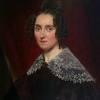
Louise Farrenc Sheet Music
- Born: 31st May 1804
- Died: 15th September 1875
- Birthplace: Paris, France
Louise Farren was a French composer, virtuosa pianist and teacher. Born Jeanne-Louise Dumont in Paris, she was the daughter of Jacques-Edme Dumont, a successful sculptor, and sister to Auguste Dumont. At first, during the 1820s and 1830s, she composed exclusively for the piano. Several of these pieces drew high praise from critics, including Schumann. In the 1830s, she tried her hand at larger compositions for both chamber ensemble and orchestra. It was during the 1840s that much of her chamber music was written. While the great bulk of Farrenc’s compositions were for the piano alone, her chamber music is generally regarded as her best work. The claim can be made that Farrenc’s chamber music works are on a par with most of her well-known male contemporaries. Throughout her life, chamber music remained of great interest. She wrote works for various combinations of winds and or strings and piano. These include two piano quintets Opp.30 & 31, a sextet for piano and winds Op.40, which later appeared in an arrangement for piano quintet, two piano trios Opp.33 & 34, the nonet for winds and strings Op.38, a trio for clarinet (or violin), cello and piano Op.44, a trio for flute (or violin), cello and piano Op.45, and several instrumental sonatas (a string quartet sometimes attributed to her is regarded by specialists as the work of another composer, not yet identified). In addition to chamber music and works for solo piano, she wrote two overtures and three symphonies. She had the great honour to hear her third symphony Op.36 performed at the Société des concerts du Conservatoire in 1849. The one area which is conspicuously missing from her output is opera, an important lacuna as opera was at the time the central musical form in France. Several sources, however, indicate that she was also ambitious in that field, but did not succeed in being given a libretto to set to music by the Théâtre de l'Opéra or the Théâtre de l'Opéra-Comique, for reasons still to be discovered.